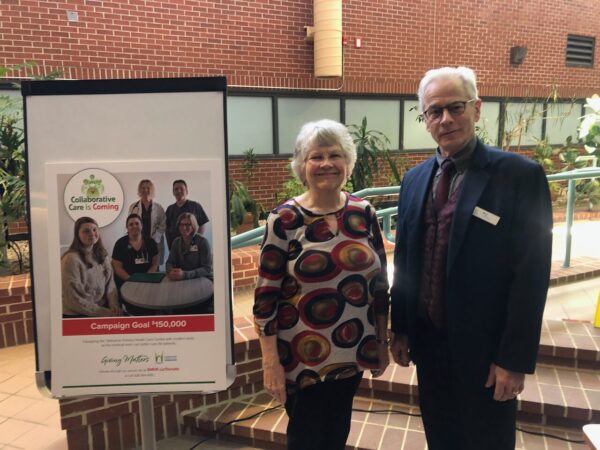
By Meg Cunningham
The Owens Art Gallery was first opened to the public in 1895, so COVID-19 is not the first pandemic it has encountered in its history.
One hundred and twenty five years later, the Owens is still operating, despite its doors being shut to the public.
The director of the Owens Art Gallery usually plans programming months, if not years in advance.
Current director Emily Falvey had to change her plans completely last March, when COVID-19 shut down the gallery.
Meg Cunningham speaks with Falvey about how she and her team were able to respond to the changes on such short notice.
M: How has the Owens adapted to COVID-19 restrictions so far?
E: With the initial lockdown, we were able to adapt fairly quickly, because for about two or three years, we’ve had a curator of digital engagement, Rachel Thornton, who you may know. We’ve done a lot of developing of online programming. So basically, we just kind of pivoted and started doing things online. Lucy McDonald, our curator of education and community outreach, did this really great thing with drawing prompts based on works in our collection. We basically kind of just focused on online for the first few months. Then we started thinking more in the long term, when we realized that this was going to be our existence for the next year to maybe two years, who knows, depending on the estimates.
Falvey says that the Curator of Education and Community Outreach, Lucy Macdonald, is still busy creating community activities for folks to do at home.
E: She [Lucy] did make something Sundays from home. So these were activities that were in a PDF form that families could download. And then they were art projects that could be done with materials that were easy to find around the home. So the one that we really enjoyed was using cracker boxes to make little tables and then drawing your favorite meal on them.
Despite the sudden changes, Falvey is still excited about future programming and projects.
E: We’ve developed this project that we’re working on right now that I’m really excited about called you are here and basically it takes works from from our collection that depict locations in Sackville, and then they’re geo mapped onto an online mapping app. It makes this kind of alternate guide to Sackville. So that you can, you know, use the app to look at the work and maybe visit those sites. And then there’s also the possibility of uploading your own drawing of those sites. So if you send them to us, we’ll include them in the app. And I like this because as I was saying, it’s online, but it’s also about getting outside. It’s more safe to be outside and inside. It’s also because we’re closed, we were not actually people can’t come to the Owens, but you can come to our collection, and have an interesting experience with it online in this way.
The other thing that I’m really excited about right now is a partnership that we have with Struts Gallery that we’re calling Umbrella Projects. We’re really at the beginning of this, and it’s basically for the next six to eight months, we’re going to be doing like offsite online collaborations as this under this umbrella organization. And the first thing that we’re working on right now is with Sappy fest for this projection situation that’s happening.
Umbrella projects is hoping to use Terra Beata’s 14-storey cranberry freezer in collaboration with Sappy Fest.
Falvey has not abandoned all of her pre-pandemic plans.
One of Falvey’s focuses as the director is to bring the Owens up to date in terms of accessibility.
The Owens has managed to carry through some pre-existing plans into their new online format.
M: Are you still able to focus on the accessibility angle of your job now that it’s all online?
E: Well, we did try this thing called “Drawing on Air” with Leah Garnett and another artist Lianne Zannier. And it was kind of set up as a Zoom webinar. And they were giving people instructions on how to draw, and you know this because CHMA was involved. We did have ASL and transcription for that event. So that was part of the live event and then the video. We had some technical difficulties with the ASL. So we’re learning, yes, we’re still focusing on that. But like anything else, there’s a learning curve involved.
Digital engagement curator Rachel Thorton is busy adapting and updating the Owens’s online programming and website, including accessibility features.
The Owens will face additional challenges if Mount Allison opens campus for class this January.
E: I don’t really know what’s going to happen in January. But I think we really wanted to just kind of like wait and see. We don’t have a lot of we have a huge staff and a lot of resources and the university is going to be using our space to support teaching and for the students who are here on campus.
The thing that’s really difficult for us right now is that it’s like doing all the work that we do for the university and doing all the work that we do for the community in these two separate ways right now, because normally those two things happen in our space. And we serve both those communities, you know, simultaneously, and now we’re having to do it separately, which is kind of interesting, but also very stressful.
Community members are encouraged and welcome to participate in the Owens’ online programming.
More information can be found on their instagram page @owensartgallery or their website mta.ca/owens.



















